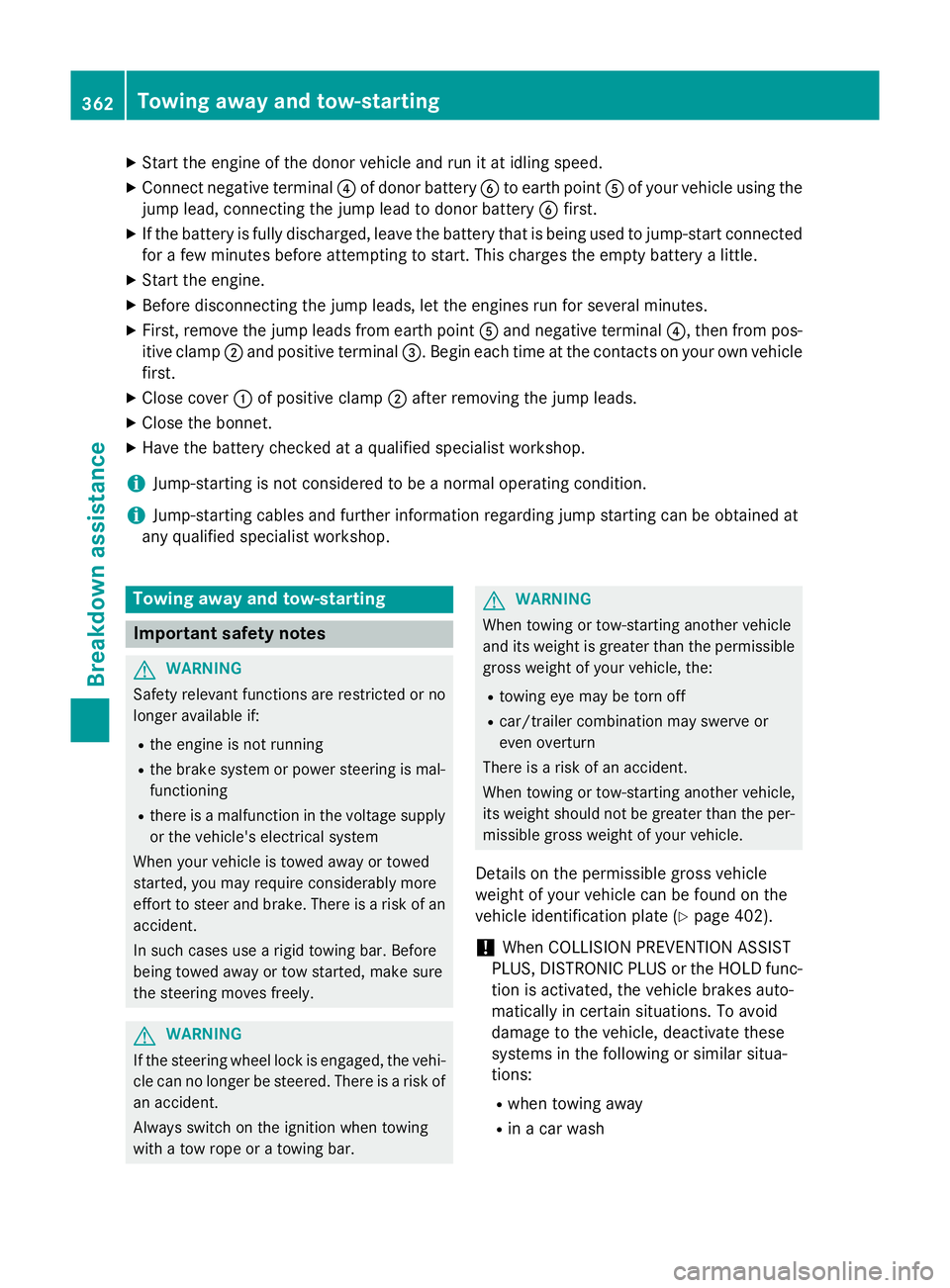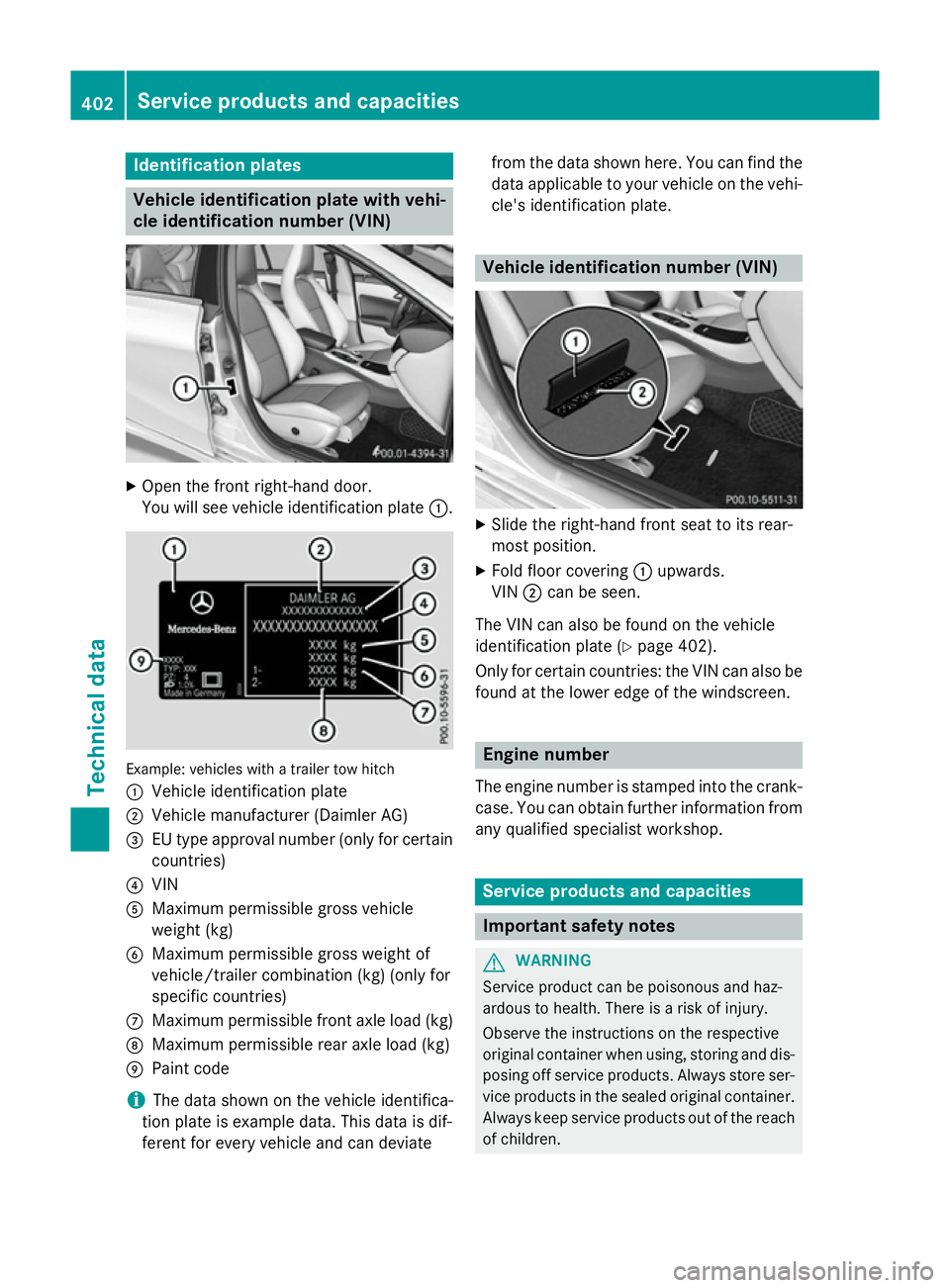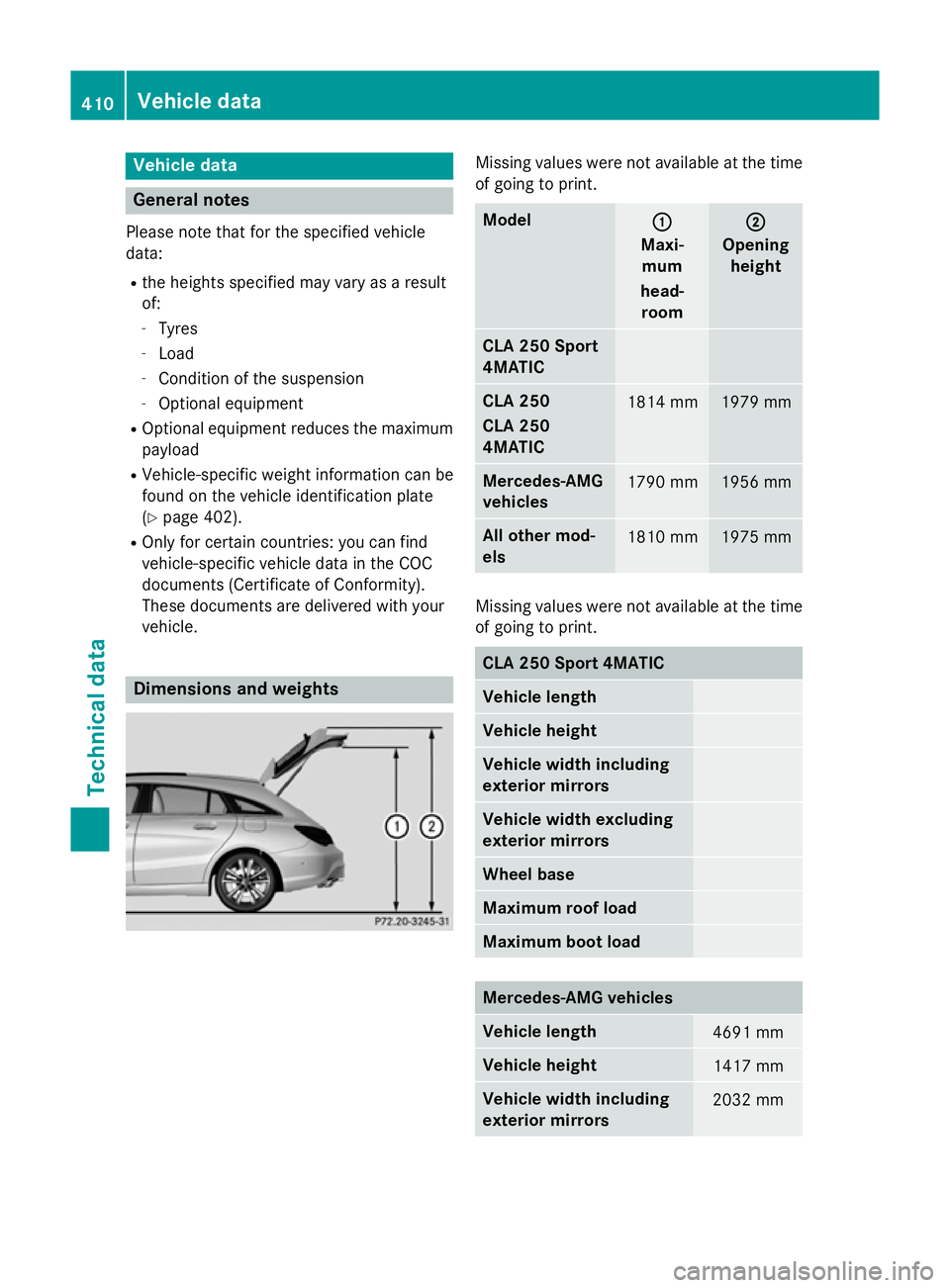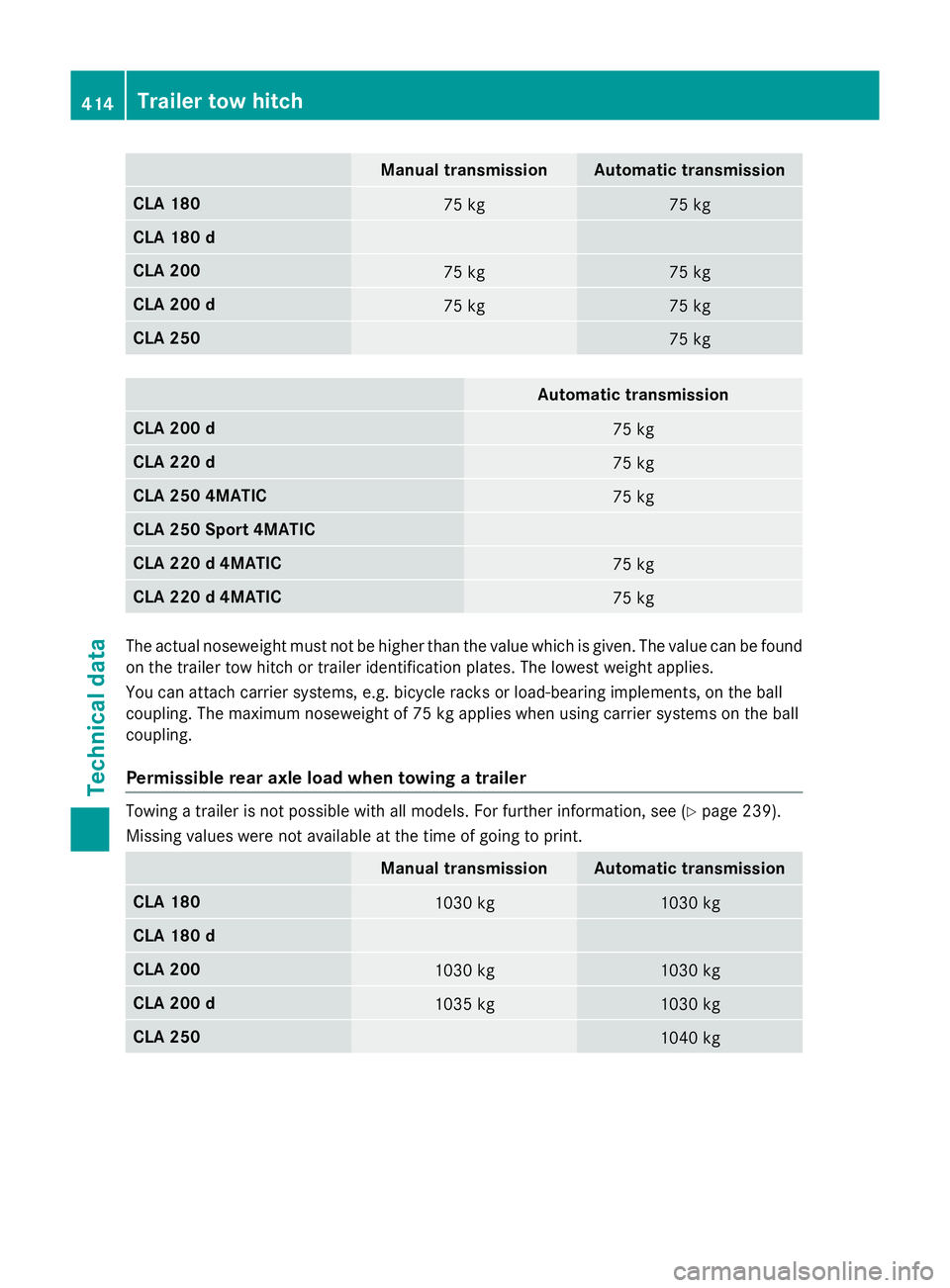Page 365 of 421

X
Start the engine of the donor vehicle and run it at idling speed.
X Connect negative terminal ?of donor battery Bto earth point Aof your vehicle using the
jump lead, connecting the jump lead to donor battery Bfirst.
X If the battery is fully discharged, leave the battery that is being used to jump-start connected
for a few minutes before attempting to start. This charges the empty battery a little.
X Start the engine.
X Before disconnecting the jump leads, let the engines run for several minutes.
X First, remove the jump leads from earth point Aand negative terminal ?, then from pos-
itive clamp ;and positive terminal =. Begin each time at the contacts on your own vehicle
first.
X Close cover :of positive clamp ;after removing the jump leads.
X Close the bonnet.
X Have the battery checked at a qualified specialist workshop.
i Jump-starting is not considered to be a normal operating condition.
i Jump-starting cables and further information regarding jump starting can be obtained at
any qualified specialist workshop. Towing away and tow-starting
Important safety notes
G
WARNING
Safety relevant functions are restricted or no
longer available if:
R the engine is not running
R the brake system or power steering is mal-
functioning
R there is a malfunction in the voltage supply
or the vehicle's electrical system
When your vehicle is towed away or towed
started, you may require considerably more
effort to steer and brake. There is a risk of an
accident.
In such cases use a rigid towing bar. Before
being towed away or tow started, make sure
the steering moves freely. G
WARNING
If the steering wheel lock is engaged, the vehi- cle can no longer be steered. There is a risk of
an accident.
Always switch on the ignition when towing
with a tow rope or a towing bar. G
WARNING
When towing or tow-starting another vehicle
and its weight is greater than the permissible gross weight of your vehicle, the:
R towing eye may be torn off
R car/trailer combination may swerve or
even overturn
There is a risk of an accident.
When towing or tow-starting another vehicle,
its weight should not be greater than the per- missible gross weight of your vehicle.
Details on the permissible gross vehicle
weight of your vehicle can be found on the
vehicle identification plate (Y page 402).
! When COLLISION PREVENTION ASSIST
PLUS, DISTRONIC PLUS or the HOLD func- tion is activated, the vehicle brakes auto-
matically in certain situations. To avoid
damage to the vehicle, deactivate these
systems in the following or similar situa-
tions:
R when towing away
R in a car wash 362
Towing away and tow-startingBreakdown assistance
Page 405 of 421

Identification plates
Vehicle identification plate with vehi-
cle identification number (VIN) X
Open the front right-hand door.
You will see vehicle identification plate :.Example: vehicles with a trailer tow hitch
: Vehicle identification plate
; Vehicle manufacturer (Daimler AG)
= EU type approval number (only for certain
countries)
? VIN
A Maximum permissible gross vehicle
weight (kg)
B Maximum permissible gross weight of
vehicle/trailer combination (kg) (only for
specific countries)
C Maximum permissible front axle load (kg)
D Maximum permissible rear axle load (kg)
E Paint code
i The data shown on the vehicle identifica-
tion plate is example data. This data is dif-
ferent for every vehicle and can deviate from the data shown here. You can find the
data applicable to your vehicle on the vehi- cle's identification plate. Vehicle identification number (VIN)
X
Slide the right-hand front seat to its rear-
most position.
X Fold floor covering :upwards.
VIN ;can be seen.
The VIN can also be found on the vehicle
identification plate (Y page 402).
Only for certain countries: the VIN can also be
found at the lower edge of the windscreen. Engine number
The engine number is stamped into the crank-
case. You can obtain further information from any qualified specialist workshop. Service products and capacities
Important safety notes
G
WARNING
Service product can be poisonous and haz-
ardous to health. There is a risk of injury.
Observe the instructions on the respective
original container when using, storing and dis- posing off service products. Always store ser-
vice products in the sealed original container. Always keep service products out of the reach
of children. 402
Service products and capacitiesTechnical data
Page 413 of 421

Vehicle data
General notes
Please note that for the specified vehicle
data:
R the heights specified may vary as a result
of:
- Tyres
- Load
- Condition of the suspension
- Optional equipment
R Optional equipment reduces the maximum
payload
R Vehicle-specific weight information can be
found on the vehicle identification plate
(Y page 402).
R Only for certain countries: you can find
vehicle-specific vehicle data in the COC
documents (Certificate of Conformity).
These documents are delivered with your
vehicle. Dimensions and weights Missing values were not available at the time
of going to print. Model
: :
Maxi- mum
head- room ;
;
Opening height CLA 250 Sport
4MATIC
CLA 250
CLA 250
4MATIC
1814 mm 1979 mm
Mercedes-AMG
vehicles
1790 mm 1956 mm
All other mod-
els
1810 mm 1975 mm
Missing values were not available at the time
of going to print. CLA 250 Sport 4MATIC
Vehicle length
Vehicle height
Vehicle width including
exterior mirrors
Vehicle width excluding
exterior mirrors
Wheel base
Maximum roof load
Maximum boot load
Mercedes-AMG vehicles
Vehicle length
4691 mm
Vehicle height
1417 mm
Vehicle width including
exterior mirrors
2032 mm410
Vehicle dataTechnical data
Page 416 of 421

Automatic transmission
CLA 200 d
1500 kg
CLA 220 d
1500 kg
CLA 250 4MATIC
1500 kg
CLA 250 Sport 4MATIC
CLA 220 d 4MATIC
1500 kg
Permissible trailer load, unbraked
Towing a trailer is not possible with all models. For further information, see (Y
page 239).
Missing values were not available at the time of going to print. Manual transmission Automatic transmission
CLA 180
715 kg 730 kg
CLA 180 d
CLA 200
715 kg 730 kg
CLA 200 d
750 kg 750 kg
CLA 250
750 kg
Automatic transmission
CLA 200 d
750 kg
CLA 220 d
750 kg
CLA 250 4MATIC
750 kg
CLA 250 Sport 4MATIC
CLA 220 d 4MATIC
750 kg
Maximum drawbar noseweight
!
Use a drawbar noseweight as close as possible to the maximum permissible noseweight.
Do not use a noseweight of less than 50kg, otherwise the trailer may come loose.
Note that the payload and the rear axle load are reduced by the actual payload.
Towing a trailer is not possible with all models. For further information, see (Y page 239).
The drawbar noseweight is not included in the trailer load.
Missing values were not available at the time of going to print. Trailer tow hitch
413Technical data Z
Page 417 of 421

Manual transmission Automatic transmission
CLA 180
75 kg 75 kg
CLA 180 d
CLA 200
75 kg 75 kg
CLA 200 d
75 kg 75 kg
CLA 250
75 kg
Automatic transmission
CLA 200 d
75 kg
CLA 220 d
75 kg
CLA 250 4MATIC
75 kg
CLA 250 Sport 4MATIC
CLA 220 d 4MATIC
75 kg
CLA 220 d 4MATIC
75 kg
The actual noseweight must not be higher than the value which is given. The value can be found
on the trailer tow hitch or trailer identification plates. The lowest weight applies.
You can attach carrier systems, e.g. bicycle racks or load-bearing implements, on the ball
coupling. The maximum noseweight of 75 kg applies when using carrier systems on the ball
coupling.
Permissible rear axle load when towing a trailer Towing a trailer is not possible with all models. For further information, see (Y
page 239).
Missing values were not available at the time of going to print. Manual transmission Automatic transmission
CLA 180
1030 kg 1030 kg
CLA 180 d
CLA 200
1030 kg 1030 kg
CLA 200 d
1035 kg 1030 kg
CLA 250
1040 kg414
Trailer tow hitchTechnical data
Page:
< prev 1-8 9-16 17-24